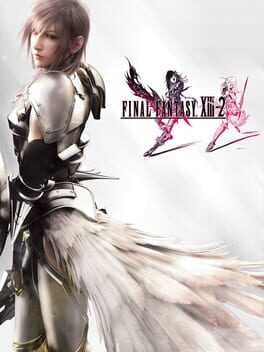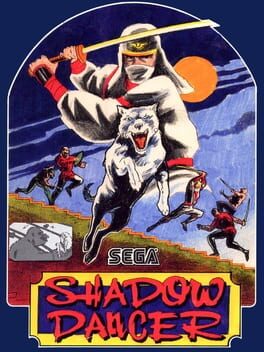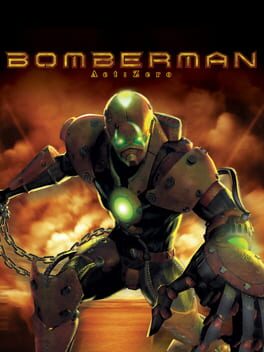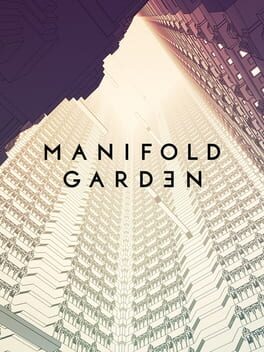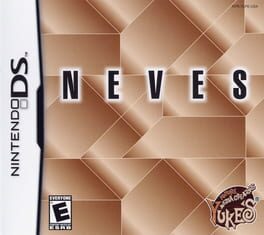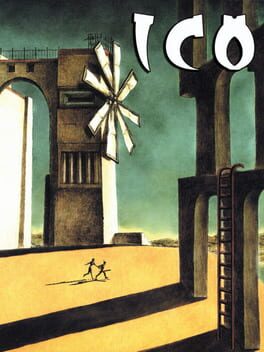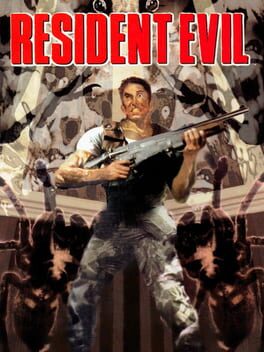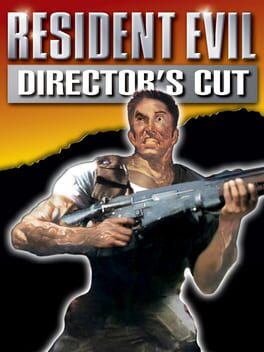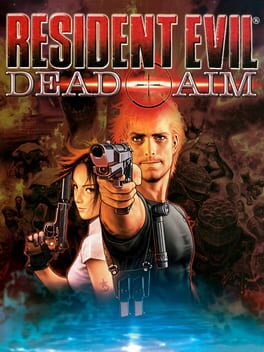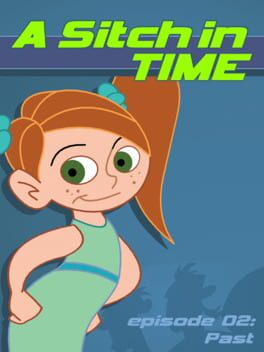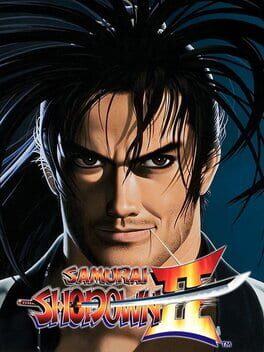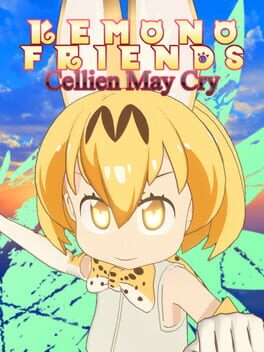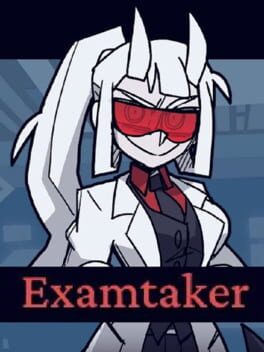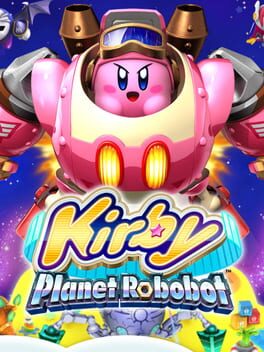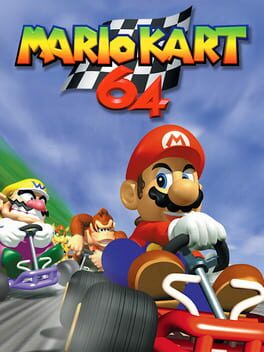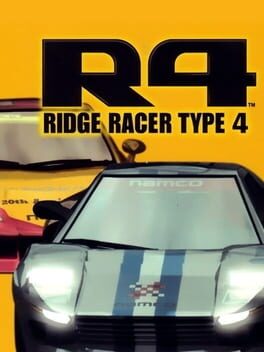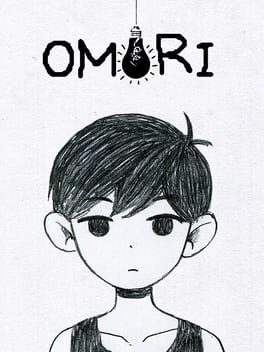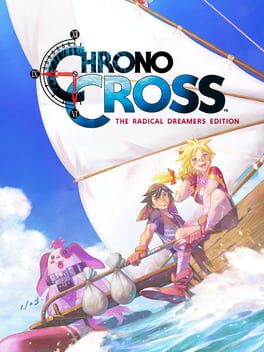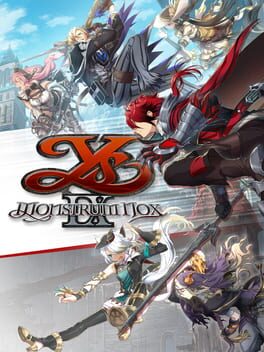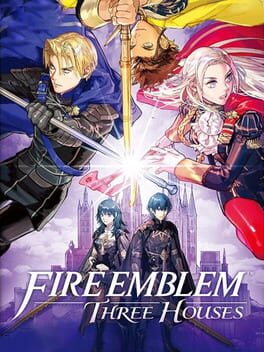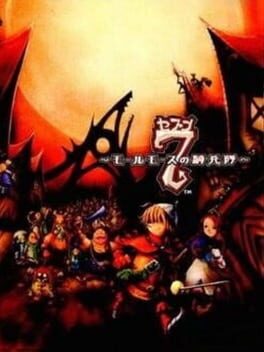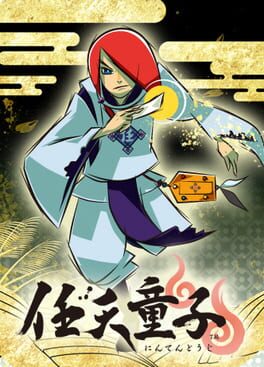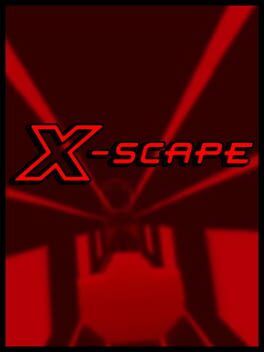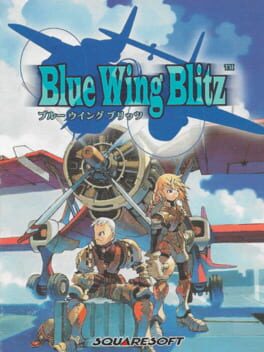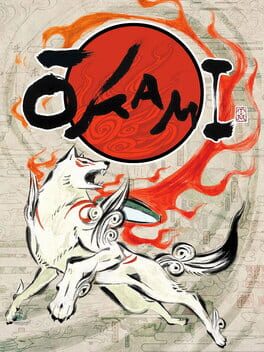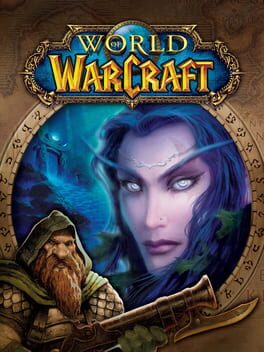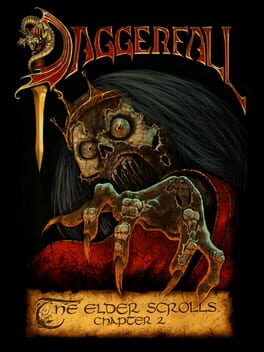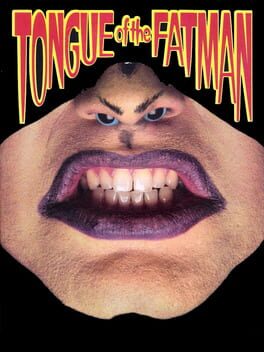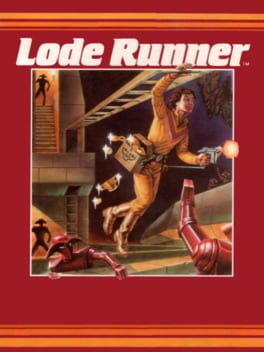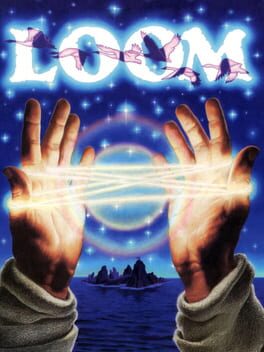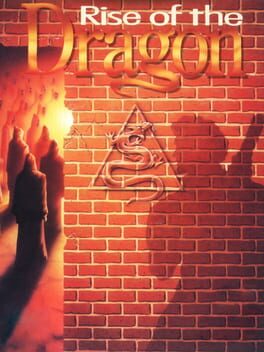Hertzvoyager
58 reviews liked by Hertzvoyager
Final Fantasy XIII-2
2011
M&M's Shell Shocked
2001
do NOT pay attention to my star score. I have GOT to play M&Ms Shell Shocked. I have GOT to play and beat M&Ms Shell Shocked. This game is NOT Crash Bandicoot, it is M&Ms Shell Shocked. You WILL use the yellow bitch's iconic spin move and jump on boxes and drive cars. I have GOT to play M&Ms Shell Shocked. The M&M Minis are right pricks I tell you what. I have GOT to play M&Ms Shell Shocked.
Pizza Tower
2023
Thin crust, pepperoni, banana peppers, crushed red peppers, a little bit of grated parm of sean cheese, anchovies. You gotta have anchovies.
I wouldn't say I've been resistant to playing Pizza Tower, but I've definitely been dragging my heels. A classic case of Weatherby preferring to wait until something releases on console, or until a friend (thank you, Appreciations) buys it for me. Many cases of this happening. I am contractually mandated to play and finish The Evil Within 2 now because Larry Davis knew the only way I'd pick it up is if the overbearing weight of obligation forced me to. I guess you could say I get in my own way sometimes, but this sort of forceful nudging usually results in me having a good time, and Pizza Tower is no exception.
Barreling through enemies, charging through barriers, executing split-second rolls and leaps, careening into and up walls, and letting your momentum carry you to new areas all feels very Wario-esque, but I was surprised to see how much Pizza Tower took from other fast paced platformers like Sonic (I swear the sirens at the start of Not Legally Actionable Noid's boss fight are from Stardust Speedway), and even Super Metroid with how often you need to make tall vertical leaps à la Samus' shinespark. If you told me Pizza Tower was assembled and baked specifically for people suffering from terminal speedrunner brain, I'd believe you.
However, Pizza Tower is still very approachable for those who don't. I definitely had my share of botched inputs and there were a few sections that took me a number of attempts before I had the execution down, but once you fall into the right rhythm and embody Mr. Pepperoni or whatever the fuck his name is, it feels really good. It's also one of those games where executing on what it expects of you makes you feel like a speedrunner, even if it's actually taking you 30 whole minutes to beat the golf level.
My only real complaint is that you're never really at risk of losing a life until the chase sequence at the end of every level, and if you botch that you get to do the whole thing over again, which given the length of some levels is a bit of a problem. Though the game is checkpoint adverse, this is a somewhat minor complaint as I only managed to die probably four or five times during the course of the game.
I surprisingly don't have too much to say about the aesthetics other than that they're very good. Very 90s Nicktoons, lot of hyper-exaggerated faces and animations that lean so hard into the squash and stretch that you'd think everyone is made out of some kind of goop. That sort of elastic, malleable quality goes a long way towards selling the player on how chaotic, violent, and fast the game is. The soundtrack is terrific, too, and I especially like the full final boss suite and escape themes.
I think Pizza Tower is a pretty good game that I'm sure everyone reading this played months before I got to it, and you probably don't need me propping it up even more. I probably should've gotten to it much earlier in the year, but hey, better late than never. Excited for them to announce a physical edition for consoles in like, the next month.
I wouldn't say I've been resistant to playing Pizza Tower, but I've definitely been dragging my heels. A classic case of Weatherby preferring to wait until something releases on console, or until a friend (thank you, Appreciations) buys it for me. Many cases of this happening. I am contractually mandated to play and finish The Evil Within 2 now because Larry Davis knew the only way I'd pick it up is if the overbearing weight of obligation forced me to. I guess you could say I get in my own way sometimes, but this sort of forceful nudging usually results in me having a good time, and Pizza Tower is no exception.
Barreling through enemies, charging through barriers, executing split-second rolls and leaps, careening into and up walls, and letting your momentum carry you to new areas all feels very Wario-esque, but I was surprised to see how much Pizza Tower took from other fast paced platformers like Sonic (I swear the sirens at the start of Not Legally Actionable Noid's boss fight are from Stardust Speedway), and even Super Metroid with how often you need to make tall vertical leaps à la Samus' shinespark. If you told me Pizza Tower was assembled and baked specifically for people suffering from terminal speedrunner brain, I'd believe you.
However, Pizza Tower is still very approachable for those who don't. I definitely had my share of botched inputs and there were a few sections that took me a number of attempts before I had the execution down, but once you fall into the right rhythm and embody Mr. Pepperoni or whatever the fuck his name is, it feels really good. It's also one of those games where executing on what it expects of you makes you feel like a speedrunner, even if it's actually taking you 30 whole minutes to beat the golf level.
My only real complaint is that you're never really at risk of losing a life until the chase sequence at the end of every level, and if you botch that you get to do the whole thing over again, which given the length of some levels is a bit of a problem. Though the game is checkpoint adverse, this is a somewhat minor complaint as I only managed to die probably four or five times during the course of the game.
I surprisingly don't have too much to say about the aesthetics other than that they're very good. Very 90s Nicktoons, lot of hyper-exaggerated faces and animations that lean so hard into the squash and stretch that you'd think everyone is made out of some kind of goop. That sort of elastic, malleable quality goes a long way towards selling the player on how chaotic, violent, and fast the game is. The soundtrack is terrific, too, and I especially like the full final boss suite and escape themes.
I think Pizza Tower is a pretty good game that I'm sure everyone reading this played months before I got to it, and you probably don't need me propping it up even more. I probably should've gotten to it much earlier in the year, but hey, better late than never. Excited for them to announce a physical edition for consoles in like, the next month.
Shadow Dancer
1989
More often than not, the Shinobi series liked to jump around and try different things instead of finding its footing with truly iterative sequels (ever play The Cyber Shinobi or Shinobi Legions? The latter is better than it looks, promise!), so Shadow Dancer is all the more valuable for that reason. It was the one time they looked back at what they had accomplished and said, "how can we directly improve upon this?" Revenge of Shinobi to Shinobi III and the PS2 Shinobi to Nightshade could be argued to be iterative sequels, but in my mind, they make different enough choices that there's just enough riskiness in the design so that they're not totally iterative. If you like the original Shinobi, I'd be incredibly surprised if you didn't like Shadow Dancer, and if you ask me, it's a straight improvement upon the original arcade classic.
One thing worth noting is that the arcade version of Shadow Dancer is a different game from the Genesis version. The Genesis version is probably a bit superior overall, I'd say, but they're close enough in quality that playing both is my recommendation. There aren't all that many Shinobi-likes running around, so why not enjoy both?
Shadow Dancer really isn't much different from Shinobi, but the things it adds make a notable difference, the main one being the addition of a dog companion. Not only is that inherently cool because it's a dog, it adds a really nice layer of strategy that the game takes full advantage of. Your canine friend can be sicced on an enemy to stun them and leave them open to attack. This is great for reducing the amount of attacks coming your way if you need to handle a pincer situation or if you're not quite sure how to get past a trigger happy enemy. It's not a foolproof thing, though, because the dog can be hit by enemies and rendered unusable for just long enough that his absence will get you killed. Thus, you need to know what enemies to sicc him on and when to keep him at your side for something that might come up later. Enemies that use guns are a prime target if they're not crouching, whereas enemies with shields will usually knock him away before he can do anything. He's an unlimited resource, but not one that's without flaws, lending Shadow Dancer an interesting ebb and flow that gives it an identity when compared to the original game.
Shinobi, like Rolling Thunder before it, is all about approaching an engagement from the right angle or with the right timing. Combat itself is little more than just pressing the button because you and everyone else are taken out in a single hit, but how you choose to start the battle is the difference between cleanly surviving or ending up in an unavoidable deathtrap. Shadow Dancer uses the addition of the dog to provide new kinds of situations that strongly encourage a calculated approach. A lot of the level design is even more vertically oriented than in the original, which leads to plenty of situations where the enemy has the high ground or you're "forced" to step down into an obvious trap. Normally, these situations could be cheap, but having your dog friend lets you get the jump on them in ways not possible. That risk is ever present, though - what if you use the dog to get past the next segment only for the next one to throw a jumpscare at you that would be way easier if he wasn't on cooldown? Well, that's where the game's place as an arcade title comes into play; you're gonna die, you're gonna have to learn where enemy placements are, but once you do, you really can take out every single foe with surgical precision and the exact right allocation of resources just like a ninja should.
Beyond that, Shadow Dancer plays it faithful. You've got four areas, including caves, an airport, a bridge, and sewers, boss fights, and a between level minigame that feels like it's impossible even though it surely isn't. The aesthetics are totally on point, as you'd expect from a Sega game, so much so that there's graffiti on one of the walls that literally says "Sega Aesthetics"! There's a dark, grungy vibe to Shadow Dancer that's far removed from Sega's blue skies reputation, but it really works for creating an atmosphere of tension, one where you never quite know what's going to jump out at you. The bosses are an interesting batch, too, the most notable of which being a robot train thing and the final boss, who summons these weird, tiny floating ninjas at you? It's very strange and actually made me laugh out loud the first time I saw it, I'll admit, but when she drops the act and comes at you herself, it goes from funny to nightmarishly difficult!
Shadow Dancer is everything good about the original Shinobi and more. The dog adds a lot, the level design is even more thoughtful, the visuals are improved, the new power-ups instill even more variety, and the difficulty is more reasonable. They even cut out the "preventing continues during the last boss without warning" thing that nobody likes! Though Shadow Dancer ultimately wasn't the future of the series and isn't on the level of Revenge or Shinobi III, it's still a quality game worth running through at least once. There are different schools of design one can apply to Shinobi, all of which proved to be successful in their own ways, so having a "definitive" version of the original style in the form of both Shadow Dancer games is a very nice thing to have. Even if you prefer the later Shinobi games, heck, especially if you do, you should really give this one a try to get a better idea of how the series became successful in the first place. Sometimes, it takes thoughtful iteration on something to understand what choices are timeless and which ones need to evolve with the times before you can really go wild with future ideas. You gotta practice your dancing before you can become a master, after all!
One thing worth noting is that the arcade version of Shadow Dancer is a different game from the Genesis version. The Genesis version is probably a bit superior overall, I'd say, but they're close enough in quality that playing both is my recommendation. There aren't all that many Shinobi-likes running around, so why not enjoy both?
Shadow Dancer really isn't much different from Shinobi, but the things it adds make a notable difference, the main one being the addition of a dog companion. Not only is that inherently cool because it's a dog, it adds a really nice layer of strategy that the game takes full advantage of. Your canine friend can be sicced on an enemy to stun them and leave them open to attack. This is great for reducing the amount of attacks coming your way if you need to handle a pincer situation or if you're not quite sure how to get past a trigger happy enemy. It's not a foolproof thing, though, because the dog can be hit by enemies and rendered unusable for just long enough that his absence will get you killed. Thus, you need to know what enemies to sicc him on and when to keep him at your side for something that might come up later. Enemies that use guns are a prime target if they're not crouching, whereas enemies with shields will usually knock him away before he can do anything. He's an unlimited resource, but not one that's without flaws, lending Shadow Dancer an interesting ebb and flow that gives it an identity when compared to the original game.
Shinobi, like Rolling Thunder before it, is all about approaching an engagement from the right angle or with the right timing. Combat itself is little more than just pressing the button because you and everyone else are taken out in a single hit, but how you choose to start the battle is the difference between cleanly surviving or ending up in an unavoidable deathtrap. Shadow Dancer uses the addition of the dog to provide new kinds of situations that strongly encourage a calculated approach. A lot of the level design is even more vertically oriented than in the original, which leads to plenty of situations where the enemy has the high ground or you're "forced" to step down into an obvious trap. Normally, these situations could be cheap, but having your dog friend lets you get the jump on them in ways not possible. That risk is ever present, though - what if you use the dog to get past the next segment only for the next one to throw a jumpscare at you that would be way easier if he wasn't on cooldown? Well, that's where the game's place as an arcade title comes into play; you're gonna die, you're gonna have to learn where enemy placements are, but once you do, you really can take out every single foe with surgical precision and the exact right allocation of resources just like a ninja should.
Beyond that, Shadow Dancer plays it faithful. You've got four areas, including caves, an airport, a bridge, and sewers, boss fights, and a between level minigame that feels like it's impossible even though it surely isn't. The aesthetics are totally on point, as you'd expect from a Sega game, so much so that there's graffiti on one of the walls that literally says "Sega Aesthetics"! There's a dark, grungy vibe to Shadow Dancer that's far removed from Sega's blue skies reputation, but it really works for creating an atmosphere of tension, one where you never quite know what's going to jump out at you. The bosses are an interesting batch, too, the most notable of which being a robot train thing and the final boss, who summons these weird, tiny floating ninjas at you? It's very strange and actually made me laugh out loud the first time I saw it, I'll admit, but when she drops the act and comes at you herself, it goes from funny to nightmarishly difficult!
Shadow Dancer is everything good about the original Shinobi and more. The dog adds a lot, the level design is even more thoughtful, the visuals are improved, the new power-ups instill even more variety, and the difficulty is more reasonable. They even cut out the "preventing continues during the last boss without warning" thing that nobody likes! Though Shadow Dancer ultimately wasn't the future of the series and isn't on the level of Revenge or Shinobi III, it's still a quality game worth running through at least once. There are different schools of design one can apply to Shinobi, all of which proved to be successful in their own ways, so having a "definitive" version of the original style in the form of both Shadow Dancer games is a very nice thing to have. Even if you prefer the later Shinobi games, heck, especially if you do, you should really give this one a try to get a better idea of how the series became successful in the first place. Sometimes, it takes thoughtful iteration on something to understand what choices are timeless and which ones need to evolve with the times before you can really go wild with future ideas. You gotta practice your dancing before you can become a master, after all!
Bomberman: Act Zero
2006
"As knowledge increases, the attitude of science towards the things of the invisible world is undergoing considerable modification." - Tulpa: Thought Forms
Frequent excursions into the retro games market have left me with less and less to collect. All that remains are those holy grails, with their inflated rarity and high price tags, which my better judgement prohibits me from purchasing. I've had to broaden my collection to keep my addiction fed, venturing into the Xbox 360 and PlayStation 3 libraries, which are still relatively affordable across the board. However, I am now nearing the edge of what is notable or worth playing. On my last expedition I came across Bomberman Act: Zero, which I stared at for some time, like Father Merrin face-to-face with the statue of Pazuzu... only with a dirty old Gamestop sticker on the side.
"USED $5.99" it read.
"Condition - Acceptable, $14" said the listing.
Seemed like a good deal at the time, but do I really want to play Bomberman Act: Zero? No. No I do not. Not even as a joke.
Around the same time, I was looking into matters of the occult, in particular the creation of Tulpas, or "thought-forms." These beings created from intense thought can be given material form and might be better understood to some as doppelgangers. If I were to fashion a thought-form of myself and task it with completing Bomberman Act: Zero for me, then I could log the game on a technicality without dirtying my hands...
With my mind made up, I purchased some material to study, including the predominant text on the subject: "Tulpa: Thought Forms" by C.W. Leadbeater. You know you're dealing with 1900s magic when passages like "magnets are found to be possessed of uncanny powers" are sprinkled between praise for the practice of mesmerism.
After several attempts ended in catastrophic failure and the destruction of malformed Tulpas (which I still do not know how to properly dispose of), I was able to generate a thought-form which perfectly replicated my shape and image and, hopefully, my talent for playing video games. There were still some imperfections. He continually leaked a viscous and fowl black substance, spoke in a language I do not understand nor am I able to identify as being from this Earth, and he exhibited signs of aggression whenever I tried to teach him the button layout of the Xbox 360 gamepad. I was, however, able to placate him with salty foods - pickle brine and V8 juice being particular favorites.
Out of concern for my safety, I purchased a lock and shut him off in the game room with a few jars of olives and NOS energy drink in case he got thirsty. I also set up a basic Raspberry Pi powered camera system and a monitor so I could observe his progress. My Tulpa took to Bomberman Act:Zero's upgrade system pretty quickly, often placing a priority on health upgrades to shoulder damage and corner squirrely opponents, but the third-person camera system - present only in one game mode - seemed to encumber him. He would progress through 20 or so stages, game over, and then make more or less the same amount of headway on the next run. I considered the first night of the experiment to be a success and went to bed.
I was awoken hours later by a tremendous noise, one that physically shook the space around me. Silence followed for two minutes as I sat stunned in bed. "You're alive. Get to the next stage" echoed through the wall soon after. I rushed to the monitor only to find it smeared in the same black substance my Tulpa had been producing since his creation. I decided to venture into the game room to clean the camera lens but was halted by a disturbing thought... Why does the female Bomberman have jiggle physics?
It was around when my Tulpa got stuck inside the walls of my apartment that I started to question if this whole misadventure was worth it. His body flattened, scurrying about like a cockroach, zipping room-to-room with the horrid scratching of his nails digging into my head. I smacked the wall to coral him back to the game room, then entered while banging two pans together to keep him at bay, but I was unable to find his point of entry. I quickly wiped off the lens again and retreated. I don't think I got any of this right. Maybe I should've had the courage to play Bomberman Act: Zero myself, or else had the self-restraint to not buy it in the first place.
Hudson Soft's bloodletting of Bomberman's signature style and charm and subsequent transfusion of grim-dark edge is no doubt born from a cynical perception of what "Gamers" were in the market for circa 2006. Games like Shadow the Hedgehog arguably exist for the same reason, but at least they have a sense of humor about it. Bomberman Act:Zero is so dry, so lacking in content and identity, that despite playing fine it's just uninspired. As I watched my Tulpa near level 80, I found myself reminiscing on Saturn Bomberman. Maybe I was unfair towards it. Perhaps I should play it again, approach it from a different perspective. But it's locked in the room with him. Drats.
The Tulpa died again after clipping into the side of a block and getting stuck. Fusion Frenzy 2 was made with the same engine. How could this happen? I cursed Hudson for not implementing a save system in their 99-level video game. Though each run came with a bit more progress, it was only prolonging the existence of my Tulpa and the clawing madness of keeping him under control. Every time I passed by the game room - his cage - his hand grasped the bottom of the door and jerked it loudly in the frame, then he whispered to me my fears. I began to feel sick and retched into the toilet something that momentarily appeared jet black, then clear. A trick of the eyes, perhaps. I hadn't slept in days.
Level 99. Dehydrated and weary, I watched as the battle played out, my Tulpa struggling against the last of his computer opponents. Blocks began to fall, closing in around the two. It was a matter of mere position that led to my Tulpa's victory. As Bomberman looked to the sky, gates opening overhead to grant him freedom from his prison, I felt calm for the first time in days. It was over. A bit anticlimactic, like Hudson never had any faith someone would play that much Act:Zero, but at least the nightmare was at its end.
I don't think Bomberman Act:Zero is a good game, and I can't even respect it for being different. It kowtowed to the Western market's hunger for muddy, brown, edgy games out of some pessimistic belief that something was wrong with Bomberman. There is no vision here, and beyond its lackluster aesthetic, it's a skeleton of a game. Even at $14 it feels anemic. Like other multiplayer arcade games, I thought that playing with another person might improve my opinion of it, and so I offered to face my Tulpa in a one-on-one battle. He knocked me over and bit my hand. It still burns and the wound continues to widen, but I was able to escape and lock the door once more.
When C.W. Leadbeater pontificates about the power of mental projection and the ability to will thought into form, it's hard not to consider the relation of these occult beliefs to the act of creating media. After all, what is a book, a drawing, or a game if not the manifestation of our thoughts into something tangible, which can be expressed to others with such vividness and clarity as to be understood as it exists in our mind?
You also got a lot of Tulpamancers out there trying to will My Little Pony characters into existence. It's an interesting field of study!
I don't think Hudson Soft set out to make something bad, but the terrible end result of their efforts now exists with a life of its own. So too did I approach the creation of my Tulpa with the best of intentions, only to release a great evil into the world.
And I must now destroy it.
Frequent excursions into the retro games market have left me with less and less to collect. All that remains are those holy grails, with their inflated rarity and high price tags, which my better judgement prohibits me from purchasing. I've had to broaden my collection to keep my addiction fed, venturing into the Xbox 360 and PlayStation 3 libraries, which are still relatively affordable across the board. However, I am now nearing the edge of what is notable or worth playing. On my last expedition I came across Bomberman Act: Zero, which I stared at for some time, like Father Merrin face-to-face with the statue of Pazuzu... only with a dirty old Gamestop sticker on the side.
"USED $5.99" it read.
"Condition - Acceptable, $14" said the listing.
Seemed like a good deal at the time, but do I really want to play Bomberman Act: Zero? No. No I do not. Not even as a joke.
Around the same time, I was looking into matters of the occult, in particular the creation of Tulpas, or "thought-forms." These beings created from intense thought can be given material form and might be better understood to some as doppelgangers. If I were to fashion a thought-form of myself and task it with completing Bomberman Act: Zero for me, then I could log the game on a technicality without dirtying my hands...
With my mind made up, I purchased some material to study, including the predominant text on the subject: "Tulpa: Thought Forms" by C.W. Leadbeater. You know you're dealing with 1900s magic when passages like "magnets are found to be possessed of uncanny powers" are sprinkled between praise for the practice of mesmerism.
After several attempts ended in catastrophic failure and the destruction of malformed Tulpas (which I still do not know how to properly dispose of), I was able to generate a thought-form which perfectly replicated my shape and image and, hopefully, my talent for playing video games. There were still some imperfections. He continually leaked a viscous and fowl black substance, spoke in a language I do not understand nor am I able to identify as being from this Earth, and he exhibited signs of aggression whenever I tried to teach him the button layout of the Xbox 360 gamepad. I was, however, able to placate him with salty foods - pickle brine and V8 juice being particular favorites.
Out of concern for my safety, I purchased a lock and shut him off in the game room with a few jars of olives and NOS energy drink in case he got thirsty. I also set up a basic Raspberry Pi powered camera system and a monitor so I could observe his progress. My Tulpa took to Bomberman Act:Zero's upgrade system pretty quickly, often placing a priority on health upgrades to shoulder damage and corner squirrely opponents, but the third-person camera system - present only in one game mode - seemed to encumber him. He would progress through 20 or so stages, game over, and then make more or less the same amount of headway on the next run. I considered the first night of the experiment to be a success and went to bed.
I was awoken hours later by a tremendous noise, one that physically shook the space around me. Silence followed for two minutes as I sat stunned in bed. "You're alive. Get to the next stage" echoed through the wall soon after. I rushed to the monitor only to find it smeared in the same black substance my Tulpa had been producing since his creation. I decided to venture into the game room to clean the camera lens but was halted by a disturbing thought... Why does the female Bomberman have jiggle physics?
It was around when my Tulpa got stuck inside the walls of my apartment that I started to question if this whole misadventure was worth it. His body flattened, scurrying about like a cockroach, zipping room-to-room with the horrid scratching of his nails digging into my head. I smacked the wall to coral him back to the game room, then entered while banging two pans together to keep him at bay, but I was unable to find his point of entry. I quickly wiped off the lens again and retreated. I don't think I got any of this right. Maybe I should've had the courage to play Bomberman Act: Zero myself, or else had the self-restraint to not buy it in the first place.
Hudson Soft's bloodletting of Bomberman's signature style and charm and subsequent transfusion of grim-dark edge is no doubt born from a cynical perception of what "Gamers" were in the market for circa 2006. Games like Shadow the Hedgehog arguably exist for the same reason, but at least they have a sense of humor about it. Bomberman Act:Zero is so dry, so lacking in content and identity, that despite playing fine it's just uninspired. As I watched my Tulpa near level 80, I found myself reminiscing on Saturn Bomberman. Maybe I was unfair towards it. Perhaps I should play it again, approach it from a different perspective. But it's locked in the room with him. Drats.
The Tulpa died again after clipping into the side of a block and getting stuck. Fusion Frenzy 2 was made with the same engine. How could this happen? I cursed Hudson for not implementing a save system in their 99-level video game. Though each run came with a bit more progress, it was only prolonging the existence of my Tulpa and the clawing madness of keeping him under control. Every time I passed by the game room - his cage - his hand grasped the bottom of the door and jerked it loudly in the frame, then he whispered to me my fears. I began to feel sick and retched into the toilet something that momentarily appeared jet black, then clear. A trick of the eyes, perhaps. I hadn't slept in days.
Level 99. Dehydrated and weary, I watched as the battle played out, my Tulpa struggling against the last of his computer opponents. Blocks began to fall, closing in around the two. It was a matter of mere position that led to my Tulpa's victory. As Bomberman looked to the sky, gates opening overhead to grant him freedom from his prison, I felt calm for the first time in days. It was over. A bit anticlimactic, like Hudson never had any faith someone would play that much Act:Zero, but at least the nightmare was at its end.
I don't think Bomberman Act:Zero is a good game, and I can't even respect it for being different. It kowtowed to the Western market's hunger for muddy, brown, edgy games out of some pessimistic belief that something was wrong with Bomberman. There is no vision here, and beyond its lackluster aesthetic, it's a skeleton of a game. Even at $14 it feels anemic. Like other multiplayer arcade games, I thought that playing with another person might improve my opinion of it, and so I offered to face my Tulpa in a one-on-one battle. He knocked me over and bit my hand. It still burns and the wound continues to widen, but I was able to escape and lock the door once more.
When C.W. Leadbeater pontificates about the power of mental projection and the ability to will thought into form, it's hard not to consider the relation of these occult beliefs to the act of creating media. After all, what is a book, a drawing, or a game if not the manifestation of our thoughts into something tangible, which can be expressed to others with such vividness and clarity as to be understood as it exists in our mind?
You also got a lot of Tulpamancers out there trying to will My Little Pony characters into existence. It's an interesting field of study!
I don't think Hudson Soft set out to make something bad, but the terrible end result of their efforts now exists with a life of its own. So too did I approach the creation of my Tulpa with the best of intentions, only to release a great evil into the world.
And I must now destroy it.
24 Killers
2023
somehow i don't have this reviewed! the developer todd and I go way back to the early 2010s. i thought their early games like Chain Champ were cool.
following this game's evolution over that period has been fun, and I'm glad it turned out so well - a charming and personal adventure game with unique art, music, sense of place.
following this game's evolution over that period has been fun, and I'm glad it turned out so well - a charming and personal adventure game with unique art, music, sense of place.
Super Mario RPG
2023
This is definitely the most any game has been like Super Mario RPG since 1996. Played about as straight as Metroid Prime Remastered, you get a few quality-of-life improvements, but the majority of the game remains unaltered from its original release.
This was probably the right move, I can see why Nintendo and ArtePiazza didn't want to take any risks given how beloved Mario RPG is, but I personally prefer remakes play around more with the source material and do something different. The Resident Evil Remake is a perfect example of what I mean, marrying aspects of the original that made it so highly regarded while modernizing mechanical and narrative elements. Everyone has different expectations for what makes a remake good, and I feel like it's been a contentious issue this year given the glut of remakes and remasters we've been getting. I wish Super Mario RPG were a bit more ambitious, you know? Don't lock me to 8-way movement, that'd be cool.
This strict adherence to the source material does mean Super Mario RPG never loses sight of the original's charm. Some names have changed, but the script hits about as close as I remember it, Mario's little mannerisms, the way he jumps to verify his authenticity (nobody is more authentic than Mario Mario), all of that is preserved in amber. New additions like the triple attack add a bit more flavor to combat but battles never elevate to anything challenging until the post-game. Even the superboss, Culex, is kind of a chump. Timed button presses are well and good, but the low-level cap and limited number of spells can make random encounters start to feel a little too samey.
Aesthetic upgrades are overall very good. I've seen people compare Super Mario RPG to Link's Awakening's tilt-shifted style, saying it too is going for a diorama look that either hits or doesn't. I see it, though I also think the plasticy nature of the world is far more muted than it was in Link's Awakening and given that the original game already felt like a series of dioramas, I think that style is more suitable here. The new soundtrack is also fantastic, and I never felt compelled to switch to the old OST, though its inclusion is appreciated, and the menus are all very sharp and colorful. I just wish the game didn't look so pixelated on my TV, I'm not sure if it's the software or something with the display, but Wonder looked great, whereas Mario RPG looks poorly upscaled.
This also feels like a much shorter game than the original, I'm just not sure how. Outside of battles taking less time to load into (which is remarkable), it doesn't feel any more or less easy, and I don't think anything was cut. Maybe it's all in my head, but Super Mario RPG feels much brisker in its pacing. I appreciate that, however. I was able to beat it over the Thanksgiving week while trapped in the Circus Circus Hotel & Casino in Las Vegas, where I was chased after insulting The Orb and its smug incandescence. My Switch may permanently smell like cigarette smoke and I'm pretty sure I got bed bugs, but I was able to roll credits on this, and that's something to be thankful for.
Though I may sound a bit critical overall, I did have a good time with Super Mario RPG. The original game was never as special to me as it was for all the dorks out there that played it in 2003 on Snes9x and started preaching about how it's One Of Tha Best. It's very much an introductory JRPG and by the time I got to it, I found some of what it was doing to be very charming and enjoyable and other parts to be a bit flat and difficult to fully pour myself into. It sure is Super Mario RPG... Sonic the Hedgehog, Donkey Kong 3. Adventures of Lolo 1 and 2, King's Knight, Dig Dug, Chu Man Fu. Harvest moooooon
This was probably the right move, I can see why Nintendo and ArtePiazza didn't want to take any risks given how beloved Mario RPG is, but I personally prefer remakes play around more with the source material and do something different. The Resident Evil Remake is a perfect example of what I mean, marrying aspects of the original that made it so highly regarded while modernizing mechanical and narrative elements. Everyone has different expectations for what makes a remake good, and I feel like it's been a contentious issue this year given the glut of remakes and remasters we've been getting. I wish Super Mario RPG were a bit more ambitious, you know? Don't lock me to 8-way movement, that'd be cool.
This strict adherence to the source material does mean Super Mario RPG never loses sight of the original's charm. Some names have changed, but the script hits about as close as I remember it, Mario's little mannerisms, the way he jumps to verify his authenticity (nobody is more authentic than Mario Mario), all of that is preserved in amber. New additions like the triple attack add a bit more flavor to combat but battles never elevate to anything challenging until the post-game. Even the superboss, Culex, is kind of a chump. Timed button presses are well and good, but the low-level cap and limited number of spells can make random encounters start to feel a little too samey.
Aesthetic upgrades are overall very good. I've seen people compare Super Mario RPG to Link's Awakening's tilt-shifted style, saying it too is going for a diorama look that either hits or doesn't. I see it, though I also think the plasticy nature of the world is far more muted than it was in Link's Awakening and given that the original game already felt like a series of dioramas, I think that style is more suitable here. The new soundtrack is also fantastic, and I never felt compelled to switch to the old OST, though its inclusion is appreciated, and the menus are all very sharp and colorful. I just wish the game didn't look so pixelated on my TV, I'm not sure if it's the software or something with the display, but Wonder looked great, whereas Mario RPG looks poorly upscaled.
This also feels like a much shorter game than the original, I'm just not sure how. Outside of battles taking less time to load into (which is remarkable), it doesn't feel any more or less easy, and I don't think anything was cut. Maybe it's all in my head, but Super Mario RPG feels much brisker in its pacing. I appreciate that, however. I was able to beat it over the Thanksgiving week while trapped in the Circus Circus Hotel & Casino in Las Vegas, where I was chased after insulting The Orb and its smug incandescence. My Switch may permanently smell like cigarette smoke and I'm pretty sure I got bed bugs, but I was able to roll credits on this, and that's something to be thankful for.
Though I may sound a bit critical overall, I did have a good time with Super Mario RPG. The original game was never as special to me as it was for all the dorks out there that played it in 2003 on Snes9x and started preaching about how it's One Of Tha Best. It's very much an introductory JRPG and by the time I got to it, I found some of what it was doing to be very charming and enjoyable and other parts to be a bit flat and difficult to fully pour myself into. It sure is Super Mario RPG... Sonic the Hedgehog, Donkey Kong 3. Adventures of Lolo 1 and 2, King's Knight, Dig Dug, Chu Man Fu. Harvest moooooon
Manifold Garden
2019
This isn't really a review, but I've been friends with the director William for a long time. We went to the same college in Chicago (though years apart) and a while after releasing Anodyne in 2013 he contacted me about playtesting an early version of MG, then called "Relativity". I think this was either the fall of 2013 or 2014... we lived in the same neighborhood. He's also of Taiwanese origin which is especially rare that we were both doing independent games.
Anyways, as it turns out, after moving elsewhere in Chicago, I ended up moving back to the same neighborhood as him a year or so later so we would meet up now and then and catch up about what our games were up to. It felt like for a long time I was just stuck on Even the Ocean, him on Manifold Garden... eventually ETO did come out in 2016, but it'd be a few more years till Manifold Garden came out. I remember meeting for coffee and hearing about his various negotiations, navigating the world of funding, building a team, etc. I remember we had breakfast at a diner when his friend Alan Hazelden (Draknek - a prolific puzzle game designer) visited.
It was through him that I heard about a game design teaching job at SAIC and taught part time at that a few years while making All Our Asias and Anodyne 2. The neighborhood we were in was a bit isolated from the (small) games scene in Chicago, so it felt like that neighborhood was our 'gamer island' of sorts...
Anyways, as time got on I would playtest and look at more complete versions of the game. Everyone got older (at some point William hit 30, I remember a birthday party). Like with my own games it was neat to see what were test spaces slowly become complete levels, or see levels moved around in the sequence of the game, or hear music and sound added for the first time.
Eventually I moved off to Japan as I released Anodyne 2, and I believe missed the launch celebration for MG! But it was nice to see it successfully launch with platform support. In later years during the pandemic I got to visit William's new office space, we also visited our alma mater and their new games program. It's been a while since I've been back but we keep in touch now and then and his studio seems to be doing well.
I don't know how much writing has been done on this, but it's a weird thing, being in a games scene for over 10 years... a lot of folks I knew early on - when we were all teenagers or early 20s - some dropped out of the scene, some are still releasing but not really on social media... people developed different styles, different life priorities and styles of making games. We see each other's games in different states of progress... always sort of subtly reflecting on our own game creation practice as we look at and unconsciously analyze and think about what the others are doing.
Anyways, as it turns out, after moving elsewhere in Chicago, I ended up moving back to the same neighborhood as him a year or so later so we would meet up now and then and catch up about what our games were up to. It felt like for a long time I was just stuck on Even the Ocean, him on Manifold Garden... eventually ETO did come out in 2016, but it'd be a few more years till Manifold Garden came out. I remember meeting for coffee and hearing about his various negotiations, navigating the world of funding, building a team, etc. I remember we had breakfast at a diner when his friend Alan Hazelden (Draknek - a prolific puzzle game designer) visited.
It was through him that I heard about a game design teaching job at SAIC and taught part time at that a few years while making All Our Asias and Anodyne 2. The neighborhood we were in was a bit isolated from the (small) games scene in Chicago, so it felt like that neighborhood was our 'gamer island' of sorts...
Anyways, as time got on I would playtest and look at more complete versions of the game. Everyone got older (at some point William hit 30, I remember a birthday party). Like with my own games it was neat to see what were test spaces slowly become complete levels, or see levels moved around in the sequence of the game, or hear music and sound added for the first time.
Eventually I moved off to Japan as I released Anodyne 2, and I believe missed the launch celebration for MG! But it was nice to see it successfully launch with platform support. In later years during the pandemic I got to visit William's new office space, we also visited our alma mater and their new games program. It's been a while since I've been back but we keep in touch now and then and his studio seems to be doing well.
I don't know how much writing has been done on this, but it's a weird thing, being in a games scene for over 10 years... a lot of folks I knew early on - when we were all teenagers or early 20s - some dropped out of the scene, some are still releasing but not really on social media... people developed different styles, different life priorities and styles of making games. We see each other's games in different states of progress... always sort of subtly reflecting on our own game creation practice as we look at and unconsciously analyze and think about what the others are doing.
Vampire Survivors
2021
All of the let's play narration for these random-build-focused slot-machine-action-games is like 'ohh after your 50th run you'll have enough gopher coins to now unlock the Zuckerberg's Icon so now when you play Billy Boy and choose the Steven Stone for your 14th Arcana Tier you'll be able to Yummymax your way past the 4th Tier of Encroachening when you face the waves of 23 Yeti-men. Make sure to spend you 1.0% APR Slammy Shards only on Subtle-enchanted Attack Boosts to make sure the chance of reaching Heaven is fulfilled on a blue day! Like comment and subscribe
Neves
2007
Dissection puzzles have existed at least as long as recorded history, probably. In brief: a dissection puzzle is a set of tiles that can be assembled to create at least two (but usually more) different configurations of geometric shapes. It’s an idea so simple that variations of it appeared in at least two different parts of the world completely independent of one another. In Ancient Greece, dissection puzzles that visually illustrate the Pythagorean theorem were developed, and are believed to be instrumental to its proof as a fundamental relation of geometry. In China, a type of dissection puzzle known as the tangram has origins in oddly shaped modular banquet tables of the Song dynasty, meant to be moved around and arranged into fun shapes to entertain guests.
How exactly dissection puzzles made their way to Japan is unclear. In 1935, Hanayama Toys manufactured a dissection puzzle made of wooden blocks called the Lucky Puzzle and codified the version of the game that would remain popular in the Land of the Rising Sun to this day. Likely based on the tangram, it bears a remarkable similarity to its Chinese cousin. It’s composed of seven pieces, just like a tangram, but has an elegant self-symmetry that makes it unique from almost all other dissection puzzles.
In Japan, the Lucky Puzzle is recognizable enough that no explanation is needed. So in November of 2007, when a Nintendo DS game based on the classic brain teaser was released, they simply only needed to call it Lucky Puzzle DS. However, North America required a different strategy. Dissection puzzles reached western shores at various points in history, but failed to establish themselves as popular choices for would-be brainiacs. Rather than call it what it is, Osaka-based publisher and developer Yuke's invented the nonsense word Neves to adorn the front cover, similar to other puzzle games on the system. (Polarium, Zenses, and Magnetica, to name just a few of many examples.)
Even without the strong cultural recognition, Neves is intuitively easy to pick up and play. Following a brief tutorial, you’re ready to get right into snapping together shapes. The main attraction is the “Silhouettes?” mode, which is a digital refresh of a Lucky Puzzle picture book. You’re provided with outlines of the solution you’re tasked to replicate, and you have an unlimited amount of time to flip and rotate blocks until you figure it out. The puzzles themselves run a good gamut of difficulty, from ones you can solve at a glance to others that will have you fitting shapes together in every possible configuration and still scratching your head. On a few occasions, I even encountered a version of the famous tangram paradox, in which a construction of pieces seems to be an impossible subset of another. Very cool!
Neves does, however, ignore an important element of dissection puzzles: the ability to create your own silhouettes and challenge other players to mirror them. Perhaps this wasn’t possible due to the medium or too complicated for the type of budget the developers were working with, but Neves does attempt to offset this shortcoming with a couple of additional game modes. There are timed versions of each puzzle, as well as a “7 Steps” mode in which each block you place can’t be moved once it’s glued down.
Due to its novel form factor and tactile controls, the Nintendo DS would end up being an incredible platform for puzzle games. Untethered from the need to interface with games through the mechanical presses of buttons alone, it became possible for your hands to interact with puzzles almost as quickly as your brain could parse through them. Neves doesn’t make the experience perfectly seamless (the flipping and rotating can be a little clunky), but one need only compare to games like Tangram for the Amiga or Daedalian Opus to see how quickly things speed up. It’s a surprisingly solid offering, but then again, it does have the advantage of a few millennia of game design.
How exactly dissection puzzles made their way to Japan is unclear. In 1935, Hanayama Toys manufactured a dissection puzzle made of wooden blocks called the Lucky Puzzle and codified the version of the game that would remain popular in the Land of the Rising Sun to this day. Likely based on the tangram, it bears a remarkable similarity to its Chinese cousin. It’s composed of seven pieces, just like a tangram, but has an elegant self-symmetry that makes it unique from almost all other dissection puzzles.
In Japan, the Lucky Puzzle is recognizable enough that no explanation is needed. So in November of 2007, when a Nintendo DS game based on the classic brain teaser was released, they simply only needed to call it Lucky Puzzle DS. However, North America required a different strategy. Dissection puzzles reached western shores at various points in history, but failed to establish themselves as popular choices for would-be brainiacs. Rather than call it what it is, Osaka-based publisher and developer Yuke's invented the nonsense word Neves to adorn the front cover, similar to other puzzle games on the system. (Polarium, Zenses, and Magnetica, to name just a few of many examples.)
Even without the strong cultural recognition, Neves is intuitively easy to pick up and play. Following a brief tutorial, you’re ready to get right into snapping together shapes. The main attraction is the “Silhouettes?” mode, which is a digital refresh of a Lucky Puzzle picture book. You’re provided with outlines of the solution you’re tasked to replicate, and you have an unlimited amount of time to flip and rotate blocks until you figure it out. The puzzles themselves run a good gamut of difficulty, from ones you can solve at a glance to others that will have you fitting shapes together in every possible configuration and still scratching your head. On a few occasions, I even encountered a version of the famous tangram paradox, in which a construction of pieces seems to be an impossible subset of another. Very cool!
Neves does, however, ignore an important element of dissection puzzles: the ability to create your own silhouettes and challenge other players to mirror them. Perhaps this wasn’t possible due to the medium or too complicated for the type of budget the developers were working with, but Neves does attempt to offset this shortcoming with a couple of additional game modes. There are timed versions of each puzzle, as well as a “7 Steps” mode in which each block you place can’t be moved once it’s glued down.
Due to its novel form factor and tactile controls, the Nintendo DS would end up being an incredible platform for puzzle games. Untethered from the need to interface with games through the mechanical presses of buttons alone, it became possible for your hands to interact with puzzles almost as quickly as your brain could parse through them. Neves doesn’t make the experience perfectly seamless (the flipping and rotating can be a little clunky), but one need only compare to games like Tangram for the Amiga or Daedalian Opus to see how quickly things speed up. It’s a surprisingly solid offering, but then again, it does have the advantage of a few millennia of game design.
